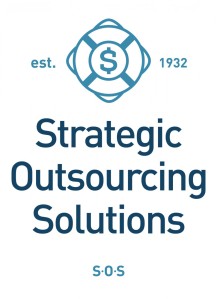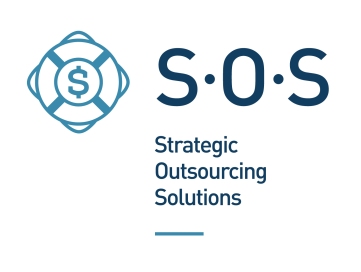In such a competitive time where health systems are building hospitals and urgent care centers sometimes across the street from each other, I believe how much you value your patients experience post discharge should be your life line. Moreover, with social media in play, your patient’s opinions about you will be seen by more people than ever before. Most health systems and physician groups have/maintain a high level of care, and have facilities with aesthetically pleasing surroundings. However, what happens to the patient after they leave the facilities may be the most important part of their stay, and you staying in business.
I will be sharing what our experiences have been as an extended business office, and some philosophies that we have encountered in our 23 years working with health systems and physician groups.
It is important to look first at how and when you are reaching out to your patients, post-discharge. After the normal process of billing and eligibility (Financial Assistance or Medicaid), a patient liability may and usually does remain.
So, Let’s start with a patient statement. I have seen many different philosophies on building a “perfect patient statement.” With 501r taking hold, these decisions become even more important, as the patient’s options must be clearly laid out with every contact. The question from the health provider has been: Do we create a statement with as much detail as possible and risk confusing the patient? Or do you build a simple statement with easy navigation and charge descriptions? Having been on both ends of the spectrum, the common theme has always been colorful and easy to read. The best result from either side may be that the statement triggers contact with the patient. This phone contact is invaluable both to customer service and liquidation of accounts. Though some education of the patient is done pre-access, this is a great opportunity for you to get to know your patients and explore all options available to them. Additionally, as an extended business office, we have found that almost a third of the patients we speak to, post-discharge, have some type of insurance that was not found during pre-access or their visit, or they do in fact qualify for some type of financial assistance. Taking advantage of this opportunity whether as an extended business office or in-house staff will lead to a better relationship with the patient, which may solidify the patient returning to your facilities for future healthcare.
This leads perfectly to the next step within the process for the patient: How and when phone contact is made to your patients
Whether you utilize an outside firm for an early-out process or not, the health system of physician group has to decide how and when they want to start asking the patient for payment via phone contact. Here again the philosophies are different. Some think that by sending an initial statement and waiting 30-45 days before making the first outbound call is sufficient. This is “the low hanging fruit” theory. The other end, is to try and contact the patient within the first 15-25 days after sending the initial statement. Here the health provider is trying to drive both revenue and customer service. Some feel that the earlier you contact the patient, the better chance you have of resolving the balances and assisting the patient with any concerns or questions. I believe that there is an educational opportunity on both ends within these first 25 days. Meaning, there is an opportunity for us to share the options available to the patient, but also a chance for us to learn about the patient. Things like the patient’s current financial situation, if there are any concerns/questions about their bill, if they have any insurance, etc. may lead the patient down the path of satisfaction and your health system to lower A/R days and increased revenue. We have found more often than not; the patient appreciates the contact earlier. If the contact is customer service/exploratory in nature, it will be better received. There is always an opportunity to build relationships with your patients/customers, but speaking with them earlier in the cycle may help both you and the patient.
Finally, having enough quality staff in place will help solidify your relationship with your patients. Having a great patient statement, and a rock solid post discharge process in place is great. However, your staff, whether in-house or at an extended business office, has to be prepared to relay your message. As we are all aware, we work in small windows within the healthcare receivables industry. Those windows start to close the older an account gets. So, having enough educated staff in place that can relay your missions, values, and is versed on all regulations that govern our industry is a start. However, having a staff in place that can first assist the patient with questions about their service, explore with the patient all possible avenues for balance resolution, and then be able to ask for payment is where the success may lie and end. Having and maintaining quality staff is more important than any technology in our industry. We have found that building a comfort level through a knowledgeable and high quality staff leads to better communication between both parties. If the patient is comfortable, they may be more willing to learn about the options that are available to them to resolve their balances.
No matter the thought process, the patient makes the wheels go round for your health system and physician groups. So, enhancing their post discharge process depends on your willingness to go that extra mile to get the balance resolved and maintain a relationship with your patients.
Whether you have an in-house process, or outsource to an early-out firm here are a few side items that we recommend that will help give you the flexibility to assist you patients better:
1) An IVR is a must- (SELF-SERVICE TECHNOLOGY)
-2 simple options on the IVR of making a payment OR to speak to a live representative will help increase your productivity as a call center, and reduce hold times for your patients
2) Having ENOUGH quality/knowledgeable staff in place to ASSIST the patient will help build relationships and comfort levels for the patients
3) Monitor your abandonment call rates. Goals should be set for wait times and abandonment rates. The better these are the more patients you are helping and the less complaints you will have
4) Design a simple colorful statement that complies with the 501r and relays your missions and values
5) Patient statement portal for statement review and automatic payments (SELF-SERVICE TECHNOLOGY)
6) Quality assurance process to monitor customer service representatives and their results
-Share this with your staff and clients (if an outside vendor)
7) Call/Speech analytic software that will allow for live call monitoring by your managers. Thus, improving your contacts with your patients, and your customer service representative performance
8) Create a patient survey for their post-discharge patient experience. This will be another avenue to monitor your in-house or outsourced process
In the competitive healthcare industry, getting a patient to return to your facilities for future healthcare is the key. Enhancing their patient experience post discharge may be the biggest hurdle to achieving this.

